All about Mahonia
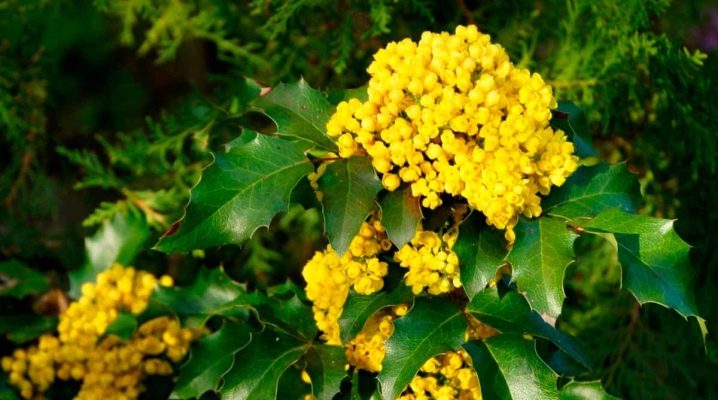
Magonia is a wonderful plant from the genus barberry. In terms of decorativeness, it has no equal. Most varieties grow in North America, on the Asian continent, but there are those that have adapted to the vagaries of a temperate climate.
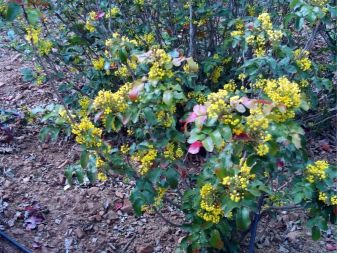
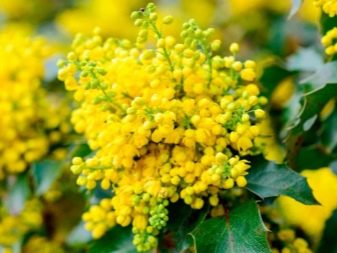
general description
Usually, under natural conditions, Mahonia is a full-fledged tree, but in an artificially created environment it grows to the size of a shrub. It is sometimes referred to as the Oregon grape, which tends to branch out. The development of the plant is slow: in the average version, the exotic grows by about 15 centimeters per year.
Usually the trunk of the plant has a pink color with shades of gray, but over the years it darkens, becomes gray.
The roots of an exotic plant are superficial, with a tendency to grow in breadth. Heat-loving exot loves to give out dense root growth. If you do not get rid of it, then gradually dense thickets grow in this place.
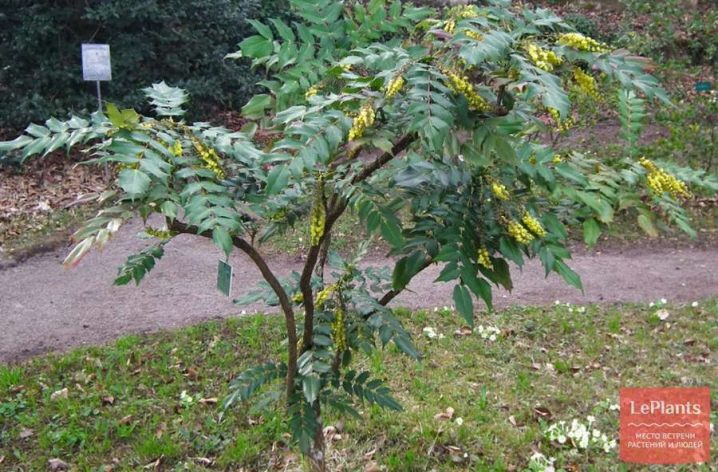
Leaf plates with reddish-brown petioles have a green color and a glossy surface on the outside, and they are matte on the inside. With the arrival of autumn, the foliage turns brown or red.
If you plan to plant a shrub of Mahonia, then you must remember that you definitely need a female and male tree for full pollination.
The buds appear in April, and in May, Mahonia blooms beautifully with yellow panicles. The flower is visually similar to mimosa. Flowering lasts about two weeks, and the berries ripen only towards the end of summer. Moreover, edible fruits can hang on the petioles before the onset of real frosts. All this time you can eat them, they are very tasty. Full fruiting is possible from the age of three.
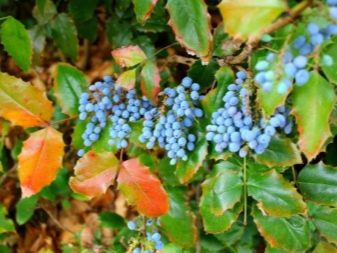
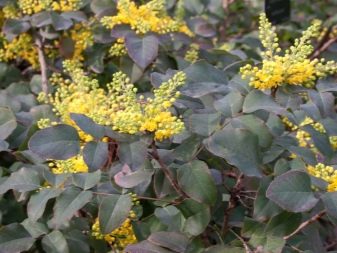
Views
There are many varieties of this exotic plant. Let's consider just a few of them.
- Mahonia is oak-leaved - the most common shrub. This is an evergreen specimen with a spreading crown up to one meter in height. Leaf plates with lance-shaped segments and a glossy surface.
In the springtime, golden flowers - panicles - bloom, and in the fall, blue berries ripen.
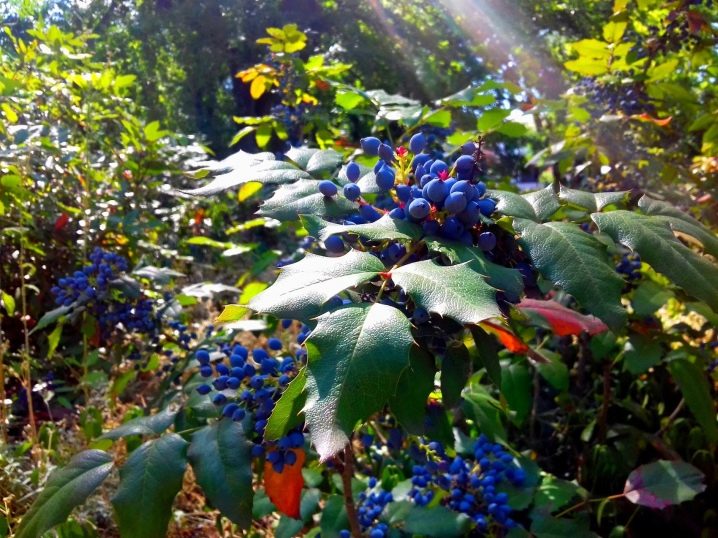
- Holly has erect stems and lanceolate leaves with sharp thorns on the sides. The inflorescences are large, yellow in color.
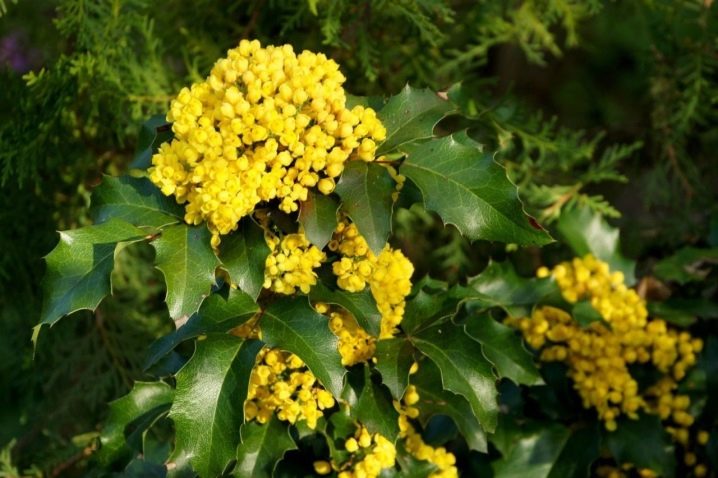
- Mahonia Appolo has the main differences - a dense crown with a huge number of shoots, inflorescences in the form of umbrellas with golden flowers, oval leaves, with the presence of small teeth at the edges.
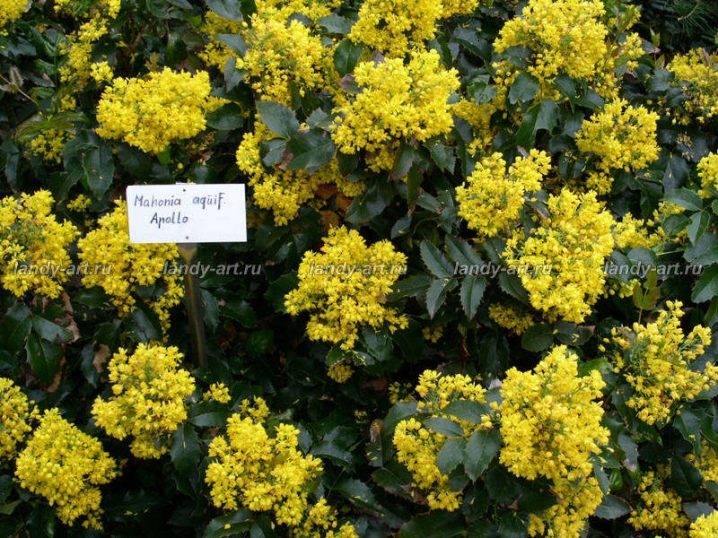
- Magonia the Creeping - a low shrub (up to 30 centimeters) with creeping stems. Many gardeners use it in their plantings as a ground cover. The leaf plates are small, painted in burgundy, crimson and green.
Lemon-yellow flowers appear with the onset of spring, and in the fall, purple berries ripen.
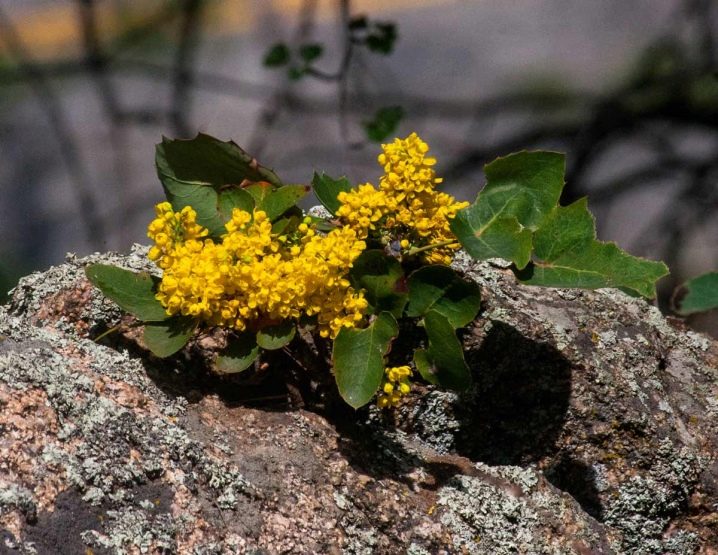
- Mahonia Japanese found in Europe, America, Japan, China. Blooms from late December until spring. A bush of medium height - up to 2 meters, of an original shape: branches from one bunch stick out in different directions. Inflorescences are yellow, with a lily of the valley aroma.
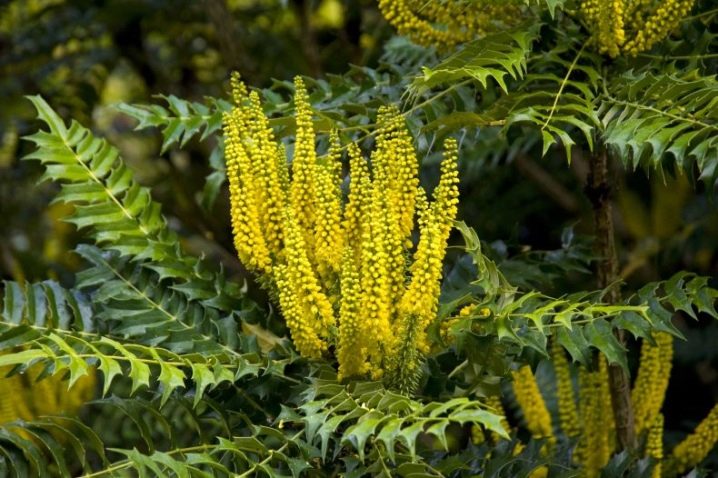
- Magonia Bracts has thin feathery leaf plates.
This variety does not grow high in length. Most often it is grown in containers.

- Fremonti is from the USA, grows up to three meters high. Its leafy plates with a purple tint at a young age, then they change color to deep green, and in the old shrub they have a bluish-gray tint.The inflorescences are bright yellow, and the berries are purple-red.

- Magonia Lamarielistnaya never grows more than 1.5 meters in height. Originally from China. The leaf plates are elongated, with small denticles at the edges. Peduncles are erect and tall, with a pleasant aroma. On the territory of Russia, this is a rather rare specimen.

- Magonia Bilya - the tallest variety (up to 2 meters in height). The leaf plates are large, with a complex pattern and impressive teeth at the edges.
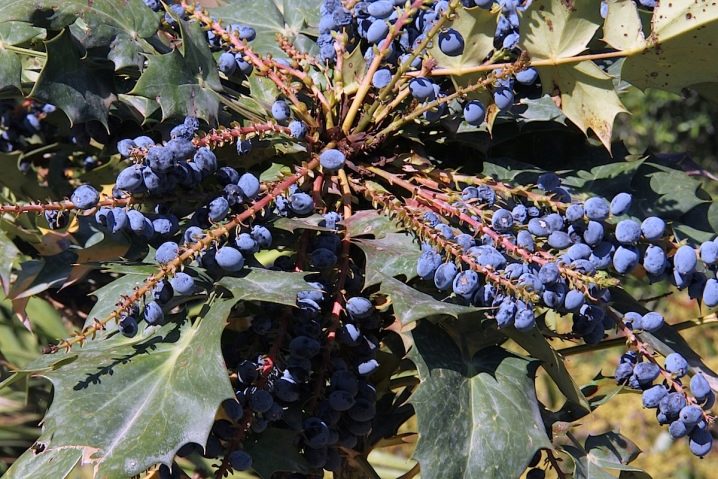
- Smaragd variety Is an evergreen shrub with large leaves and deep, bronze-tinged teeth. The inflorescences are large, with fragrant flowers of yellow shades.
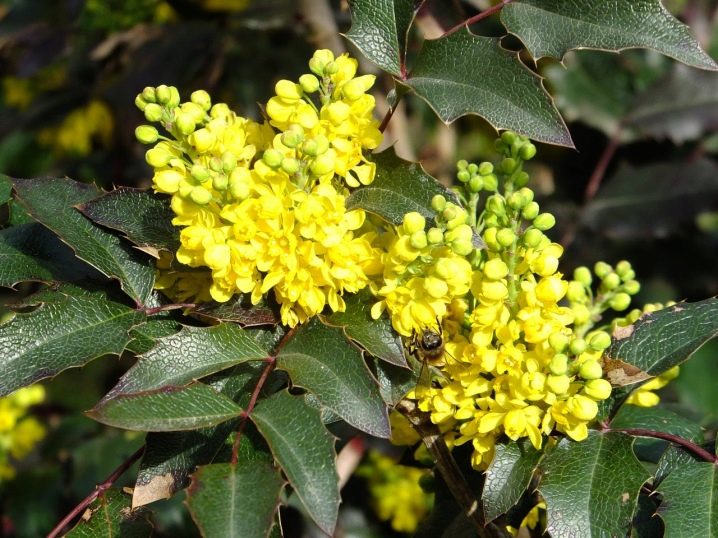
Landing
Growing a plant does not cause difficulties. And all because Mahonia has rather strong roots: they quickly take root in any case in well-prepared soil, subject to growing conditions.
Mahonia is able to develop well even in clay soil without the presence of a nearby aquatic environment. But if there is any alternative, then it is better to root the seedlings in a well-drained composition. It is recommended to choose a slightly acidic soil. Exot prefers partial shade, does not like strong winds and drafts. Full shade or good lighting will not allow Mahonia to give a decent harvest, so you need to immediately decide which is better: decorativeness or yield.
Before planting, it is worth considering the type of fence, because the shrub is actively able to grow. Suitable for this: garden tape, shields, slate.

The choice of seedlings should be based on the fact that for cross-pollination it is necessary to purchase several of them. In addition, to create landscape design, they can be planted in a tight order, and if for harvesting, then at a distance of at least a meter.
It is recommended to plant in open ground with a high humus content. Therefore, we advise you to fill the hole with a mixture of sand (in two parts), humus and turf (one at a time).
To begin with, carefully examine the root system for damage to the roots by diseases and insects, as well as their damage. At the slightest suspicion, the roots should be removed. The place of the cut is powdered with ash or coal.
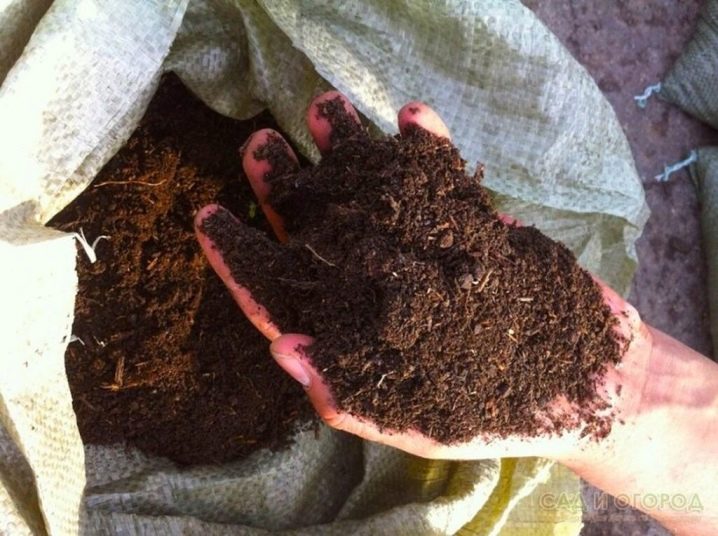
Before sending the seedling to the planting hole, do not forget about the drainage. Next, we lower it, straightening the roots in the hole, only after that we fill the voids with soil. With a closed root system, the bushes are transplanted by the transshipment method. After planting, it is best to compact the soil well, water and mulch the trunk circle.
If you plant Mahonia in a relatively cool climate, then it is best to do this in the spring. In the south, planting work is carried out in the fall, until the end of October.
Attention! It is necessary to remember one important point when planting: you cannot get carried away with deepening the root collar, otherwise the shrub will not take root.
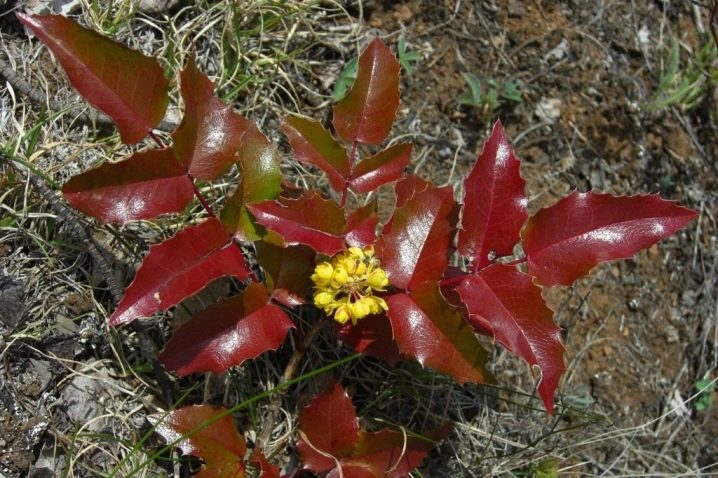
Growing care
It is difficult to care for a plant in the open ground only at the initial stage: after all planting work or transplanting to another place. The rest of the time, there are no problems.
Watering on an ongoing basis is needed for young bushes at the rate of one bucket of water for each seedling once a week. An adult tree does not need this, the exception is a drought period. Loosening and mulching are considered mandatory procedures; it is they that make it possible to activate air exchange, but at the same time retain moisture.
For a shrub, it is enough to apply fertilizers up to two times per season: in spring (before flowering or before the need to transplant a tree) and in summer (before fruit setting). Recommended fertilizers are Kemira Universal and Nitroammofoska. An adult plant is suitable for mulching with humus or compost as needed.
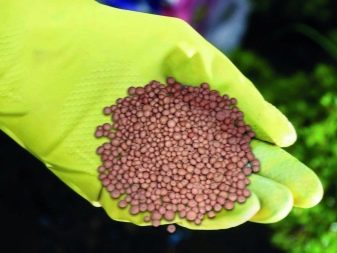
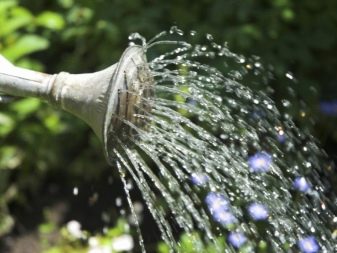
Pruning after flowering is carried out to form the correct crown. Although such a procedure is not at all necessary for a shrub. And all because exotic bushes develop unevenly, one-sided. Therefore, they need to be corrected.Sometimes designers create a bonsai-style tree from Mahonia. You also need to remove diseased and old branches. But in no case should you cut off radically. Some gardeners argue that pruning is needed for a tree that is more than 10 years old. If you pinch young shoots, then you can activate the growth of lateral branches.
Usually, Mahonia in the garden with a lot of snow tolerates winter well. But there are regions where frosts rage down to minus 30, and very little snow falls. Therefore, in this case, it is necessary to insulate the bush with lutrasil, and throw peat and spruce branches around the trunk circle.
But the older the bush, the less frost is terrible for it. In the spring, as soon as the sun warms up, the shelter must be removed.
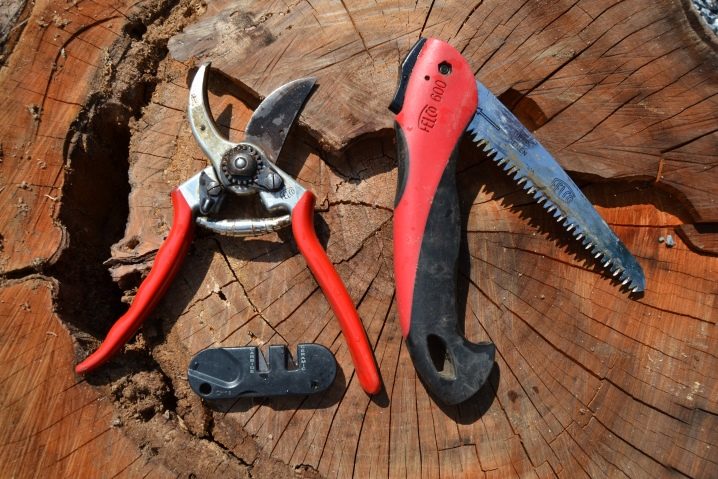
Reproduction
Cuttings
Cutting is much easier to carry out. To do this, it is recommended to cut the cuttings of the last year in the spring.
Please note that there should be five well-developed buds on each cutting. They must be buried in the ground. During planting, the ground should be well warmed up.
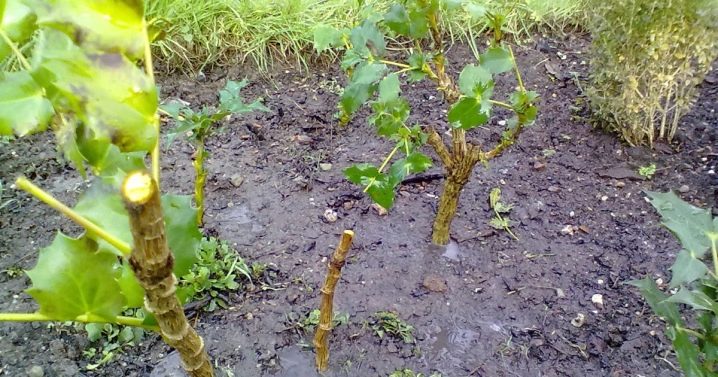
Layers
This technique is optimal for hybrid breeding. To do this, good shoots are slightly bent to the ground and instilled in, securing them with a wooden bracket. As a rule, the survival rate in this case is very good.
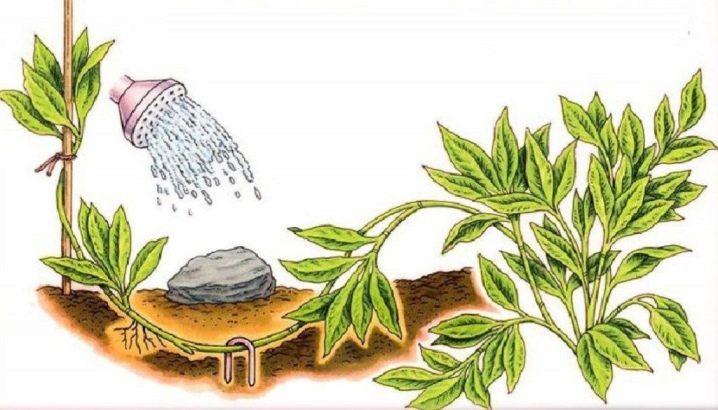
Seeds
Seed propagation is a long and difficult process. And all because the planting material must be stratified. In addition, it is difficult to purchase seeds for the reason that the demand is small - you simply cannot find them in the store. If you plant seeds in an independent order, then there is a high probability that you will no longer get the varietal characteristics of the plant.
And nevertheless, if there is confidence in the result, then it is necessary to place the seeds in a container with a sand mixture and send them to a cold place for three months. Temperature readings should remain at around plus 5 degrees throughout the entire period.
Before planting, it is recommended to keep the seeds in a fairly warm place for seven days.

Collecting seeds is advised to be carried out only with the onset of heat, and you only need to choose fully ripe berries. After the seed material is cleaned of excess pulp, rinsed thoroughly and dried. Closer to January, the process of stratification begins.
Dividing the bush
In this case, the opposite is true. Varietal seedlings take root best of all. Everything is quite simple here: the young branch is cut off from the main plant with a shovel. After he is put in a new place. All procedures are carried out with the onset of spring.
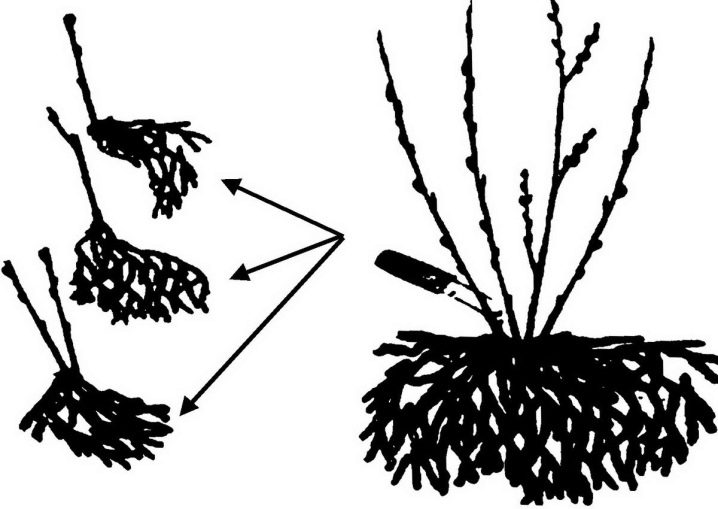
Diseases and pests
Mahonia is a pest and disease resistant shrub. But sometimes (due to improper agricultural technology) fungal diseases comprehend it. These include: rust, spotting, powdery mildew.
- For powdery mildew it is recommended to treat the shrub once every two weeks with solutions of fungicides: "Karatan", "Topsin-M", "Fundazol".
- "Bayleton", "Abiga-Peak", "Tsineb", "Oksikhom" will help against rust.
- Phylostictosis is manifested by the appearance of brown spotting on the leaf plates. Oxyhom, Kaptan or Ftalan will help you from such ailment.
- The shrub is often affected by whiteflies, spider mites, and aphids. To get rid of uninvited guests, universal chemicals such as "Aktellik", "Fitoverm", "Aktara" are suitable.
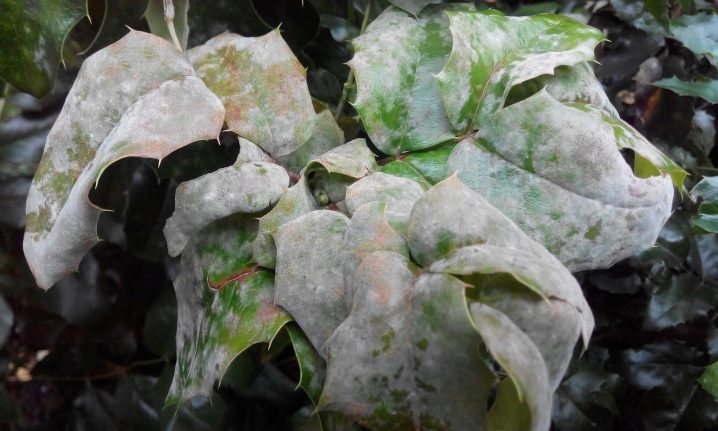
Use in landscape design
Magonia as a beautiful ornamental plant is actively used in the design of the site, when creating design compositions. For example, many professionals use it to form a hedge.
Dwarf varieties look good when planted near curbs, on alpine slides.
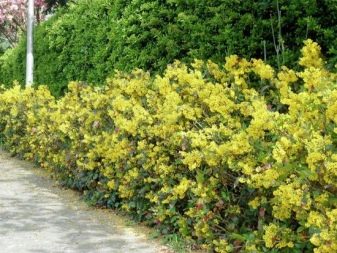
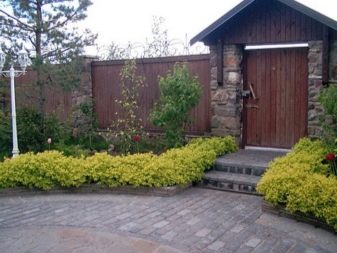
Magonia is good for landing in the following cases:
- background plant;
- additional stone composition;
- "Architectural" single-plan tree;
- a tree that is planted on the hillsides;
- to simulate a forest belt;
- as an imitation for the lawn;
- as a background in mixborders and tapeworms;
- like a melliferous bush.
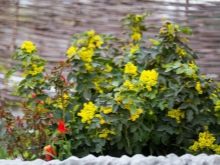
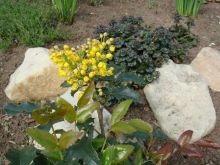
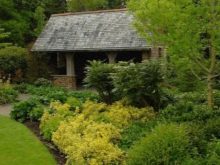
An exotic plant goes well with coniferous plantings, you can beautifully create compositions in rose gardens. The vegetation is in harmony with camellia, azalea, erica, magnolia. Mahonia is planted together with fruit and ornamental crops (Japanese quince), berry bushes (apple, irga, cotoneaster).
At the same time, Mahonia berries are good as an immunostimulating agent. They are used to raise the general tone after chemotherapy courses. For many, culture helps to alleviate the condition of complex forms of diabetes, psoriasis. Extract from the roots helps to activate the gastrointestinal tract. But of course, such treatment cannot be carried out without consulting a doctor.
Magonia is unpretentious to the conditions of detention, therefore, it is planted not only in private territories, but also in city parks, squares, recreation areas.
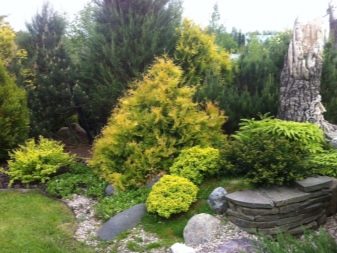
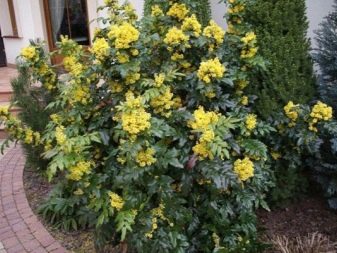
The combination of Mahonia with other plants, trees and shrubs gives the plantings a feeling of exoticism, color and originality.







































































































The comment was sent successfully.